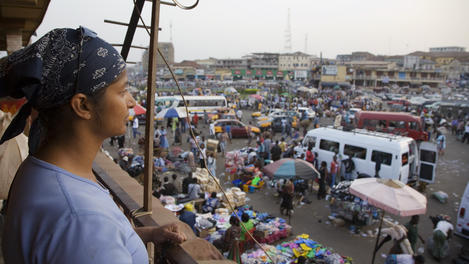
The world isn’t dangerous or unsafe. Quite the opposite. There are some desperate places and people, even in your home town, but these are a minority. In fact, you’re more likely to get into trouble at home than travelling if you follow these common sense tips on your trips.
1. Back (packer) glance
 Image by Inti
Image by Inti2. Separate your sources of money
 Image by Dennis Wong
Image by Dennis Wong3. Don’t keep your wallet/purse in your jeans’ back pocket
 Image by MasonJars
Image by MasonJarsTo avoid being pickpocketed, keep your wallet in your front pocket, especially a pocket that can be buttoned up. Best of all, use the inside pocket of your jacket. There are also a load of different ‘money belts’ (see examples here) that either hang inside your shirt or wrap around your waist (under your shirt), etc. Make sure it’s waterproof because travelling can often be sweaty/perspiring work. I’d advise against the bum bag/fanny pack varieties. There is no better way to advertise the fact that you have a load of valuables on you…and, of course, they were never ever cool.
4. Scan all your major documents
 Image by Ken_Mayer
Image by Ken_Mayer5. Don’t trust strangers who wear turtle neck/polo neck tops
 Image by Search Engine People Blog
Image by Search Engine People BlogOnly kidding about the turtle necks. It is hard to get to know the locals at a destination if you don’t trust them, but there are limits to how much you should trust them when it comes to your personal safety (going with them into a risky area of town), money, and consuming their food or drink (if they are not consuming it themselves). Do a search on Lonely Planet’s Thorn Tree forum for the latest scams that travellers have reported for where you are going. Also, look at the ‘Dangers and Annoyances’ sections in your Lonely Planet guidebook and ask your hotel/hostel staff for safety tips.
6. Get travel insurance
 Image by Patrick Denker
Image by Patrick DenkerThis is mainly for health costs if you get ill or injured while abroad. Hospital costs can quickly get into the tens of thousands of dollars, even for a minor injury. Insurance is worth it. We recommend these guys.
7. Get vaccinated
 Image by I woz ere
Image by I woz ere8. Avoid PDAs
 Image by Clive Power
Image by Clive PowerI mean Public Displays of Affluence (not affection). If you’re travelling abroad then you’re more than likely to be richer than most of the locals, but advertising this fact by wearing gold jewellery or carrying a $2000 camera around your neck is not advisable. It makes you a target for thieves. Leave your jewellery at home and keep your camera in a bag when you’re not using it.
9. Some things are best perfected at home
 Image by René Ehrhardt
Image by René Ehrhardt10. Check the fine print and certificates of instructors
 Image by _e.t
Image by _e.tIf you’re doing a specialist course (scuba diving) or something risky (bungee jumping) then check the operators have legitimate qualifications and a good safety record. There’s usually a reason a course is cheaper than the others. PADI has a list of qualified diving operators here.
11. Don’t leave your belongings unattended in public spaces
 Image by buyalex
Image by buyalex12. Give it up
 Image by silver marquis
Image by silver marquis13. Don’t give to beggars
 Image by magical-world
Image by magical-worldThere are exceptions to this rule, such as monks seeking alms. But, in general, don’t give away money to people on the street. Apart from the fact that you may have to get your wallet/purse out, encouraging begging is not the most efficient use of your money (and goodwill). If you want to help out then do some volunteer work in the destination or donate some money to a local charity for the homeless or loan some money to a poor entrepreneur via Kiva.
14. Be wary of using your credit card at an internet cafe
 Image by TimYang.net
Image by TimYang.netInternet cafes’ computers may have keylogger software or hardware that records your key strokes, so unscrupulous characters (not necessarily the owners of the cafe) can see the username and password to your online accounts (banking, email etc) or grab your credit card details. A good trick to make this more challenging for them has been proposed by Thorn Tree user Karlo: open a couple of other browser windows (for the website you are using) and half way through entering your passwords or credit card information type incorrect information into these windows.
15. Don’t pat stray dogs and cats
This is more of a ‘note to self’ than to you, after a stray dog tried to pull my thumb off in Buenos Aires. You may be missing your pets at home, but stray animals may be carrying rabies and other fun infections (and big teeth). You should also not feed monkeys, for the same reason. (Pictured above is me with an affectionate Siamese cat in Bangkok — who belonged to this store owner.)
16. Your worst enemy may be your travel companion
 Image by Ed Yourdon
Image by Ed YourdonWhen traveling to Mexico, stay always in a Quinta Real Hotel http://www.quintareal.com/






